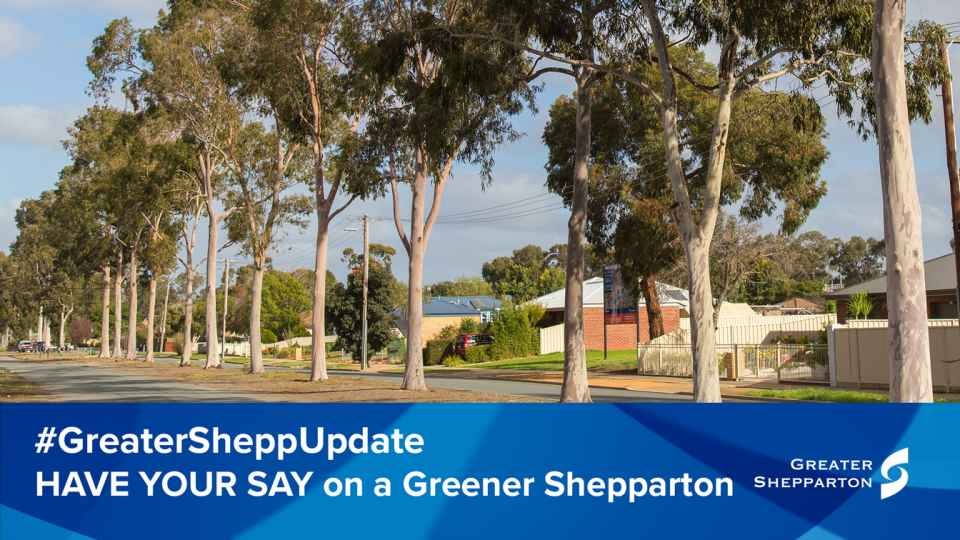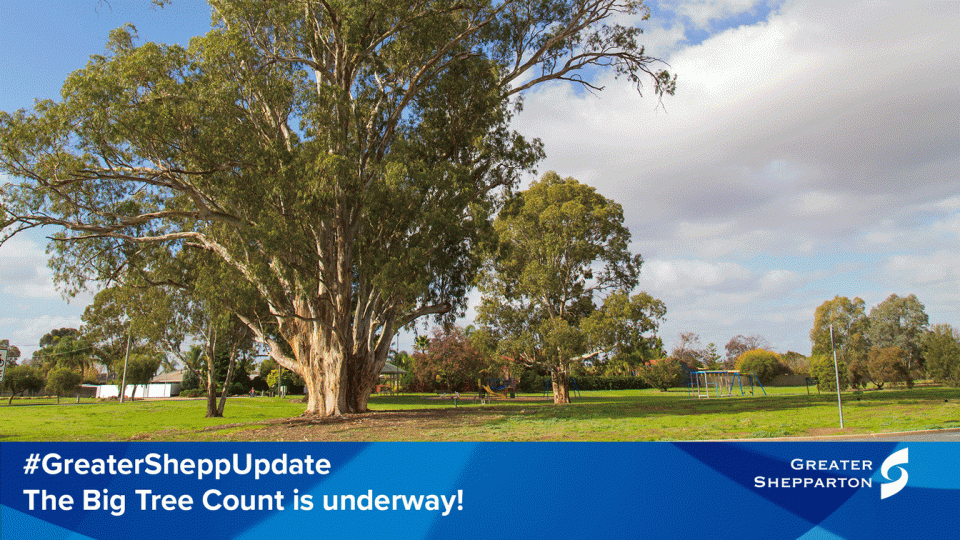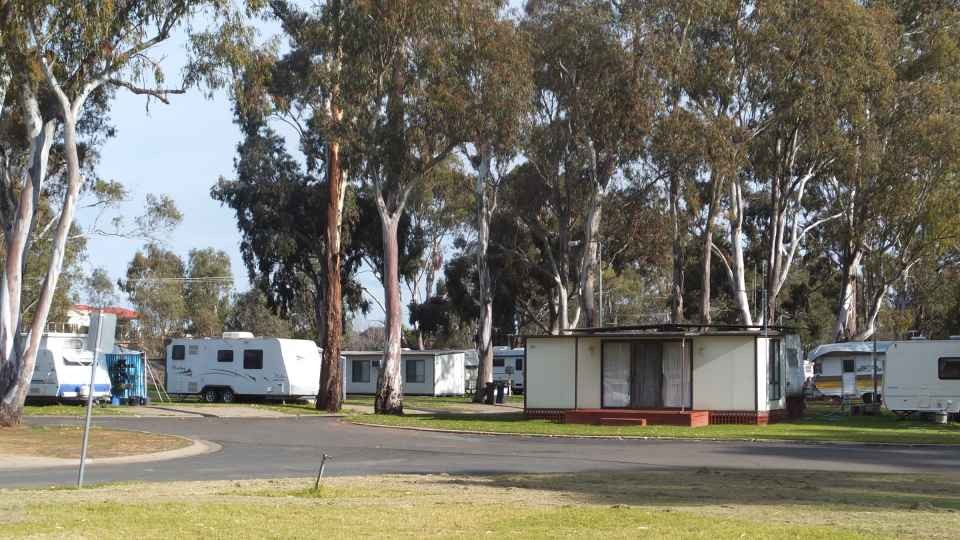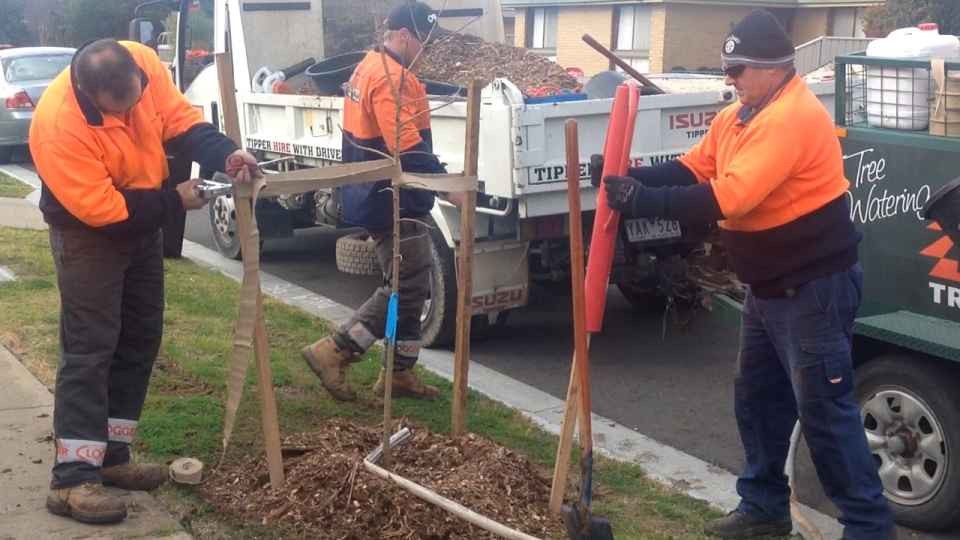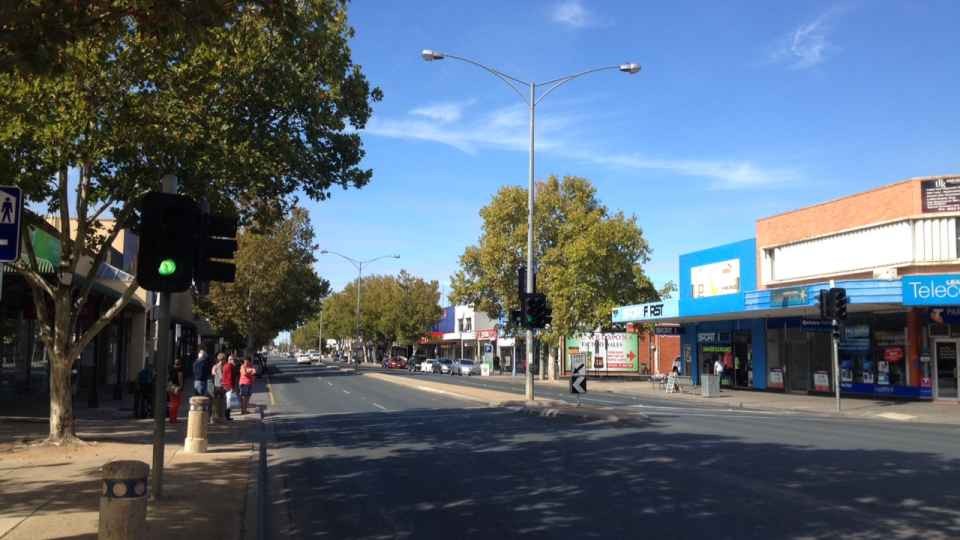Urban Forest Strategy
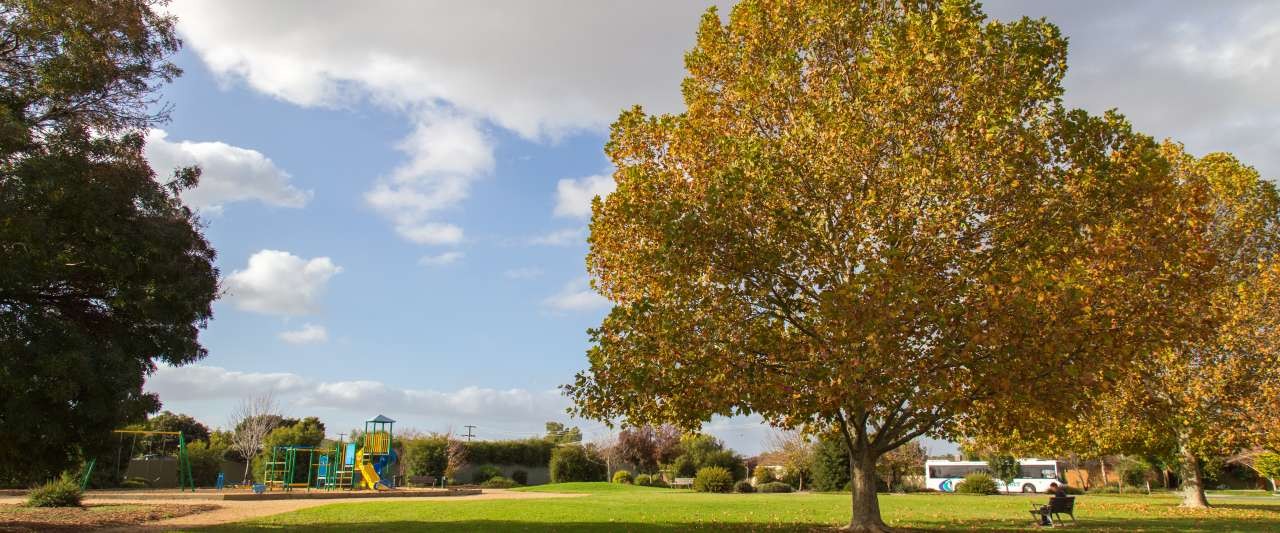
The Urban Forest Strategy sets a vision, objectives, targets and a series of actions for Council to adopt and adhere to over the coming decades. It provides a framework for existing tree management, technical guidelines and precinct plans.
Vision
Greater Shepparton will be an attractive, vibrant and liveable region with well-connected green spaces that are valued by the community.
What is an Urban Forest?
Greater Shepparton City Council manages around 37,000 street and park trees in urban areas including Shepparton, Mooroopna, Tatura, Dookie, Murchison, Kialla and Toolamba. A comprehensive tree audit determined that approximately 19,000 of these are in Shepparton, 6,000 in Mooroopna, 4,000 in Tatura and 8,000 in other towns and locations.
These trees are a core part of Greater Shepparton’s urban forest, which includes all urban trees, both public and private (that is, trees on your property).
Tree canopy cover was only calculated for the public urban areas of each town. It did not include surrounding farmland or state or national parks. Trees in natural bushland and river lands adjacent to urban areas are also not considered part of the urban forest.
The urban forest offers natural shade, localised cooling, habitat for animals, air pollution reduction and lower stormwater flows across the whole Greater Shepparton region.
Why do we need a Strategy?
The Urban Forest Strategy sets a vision, objectives, targets and a series of actions for Council to adopt and adhere to over the coming decades. It provides a framework for existing tree management, technical guidelines and precinct plans. There are currently 6,000 vacant sites across Shepparton, Mooroopna and Tatura where trees have died or been removed.
The Urban Forest Strategy ties together existing priorities for the region such as health and wellbeing, liveability, climate change adaptation, biodiversity and economic prosperity. A healthy, long lived and valued urban forest will make Greater Shepparton a great place to live and work.
Aim of the Urban Forest
By 2037 Council will:
- Increase urban forest canopy cover in each town to 40%
- Reduce the number of vacant street tree sites to zero
- Improve urban forest diversity by age and useful life expectancy
- Increase the number of biodiversity links through each towns street and road network
- Include urban trees in all major Council infrastructure projects at planning, design and implementation phase
- Ensure best practice urban tree management is being delivered across all Council programs
Why is an Urban Forest Important?
The urban forest provides benefits to people – shade, public amenity and green spaces for you to enjoy. But it also has strong economic and environmental benefits that are worth considering.
Health and Wellbeing Benefits
- provides natural shade and shelter for pedestrians and cyclists: Shade trees reduce daytime temperatures between 5 and 20 degrees celcius
- improves the desirability of a neighbourhood and encourages people to spend time outdoors and interact with their community, particularly in areas of socio-economic disadvantage
- improves amenity and aesthetic of public open space, particularly playgrounds, encouraging active play
- encourages motorists to drive more slowly through the provision of uniform, avenue like plantings along streets creating safer streets
- reduces air, water and soil pollution
- is a significant component of a liveable city or town
Economic Benefits
- Improves commercial vitality: shoppers spend longer and more money in shopping areas that are well treed and landscaped. Tree can improve retail activity by up to 20%.
- increases house prices in Brisbane and Perth through the provision of healthy and well maintained street trees
- reduces energy use in buildings: A 10% increase in deciduous tree cover can reduce heating and cooling costs in houses by 5-10%
- greatly improves the brand, character and amenity of the region,
- can provide a return on capital of up to five times e.g. New York’s street trees return $5 for every $1 invested in street trees
- is one of the most cost effective and efficient public assets for adapting urban areas to climate change through provision of shade, evapotranspiration and stormwater interception
Environmental Benefits
- significantly reduces stormwater flows and improves stormwater quality
- connects biodiverse locations by creating a green corridor
is one of the most effective mechanisms for reducing the Urban Heat Island Effect (i.e. the build-up of heat in hard surfaces during periods of hot weather).
What will replanted sites look like?
Download the Strategy
Published April 2017
For more information
For further information please contact:
Manager Parks, Sport & Recreation
Greater Shepparton City Council
Phone: 03 5832 9700
Email: council@shepparton.vic.gov.au



